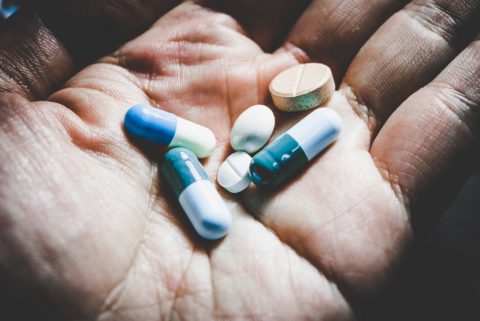This article was originally published (in German) in the print edition of Frankfurter Allgemeine Zeitung (FAZ) on October 29, 2019.
Progress in discovering new antibiotics is imperative
Boosting R&D to fight superbugs: getting the risk-reward ratio right
Fifty years ago, the global health community thought it had won the war against infectious diseases through antibiotics. Today, antimicrobial resistance (AMR) is a global health emergency putting at risk all the progress made by modern medicine, not only in developing countries but also in industrialized countries such as Germany. A routine intervention such as arthroscopic knee surgery or a hip replacement can become a deadly risk because of an infection. We are being forced to imagine a world where a common bacterial infection means dicing with death. And this is not scaremongering.
In Germany, four out of 100 entering hospital leave with a bacterial infection. In the EU an estimated 400,000 of these infections are caused by antimicrobial resistant microorganisms every year. As many as 10 million a year could be killed by these “superbugs” by 2050 compared with “just” 700,000 now.
Progress in discovering new antibiotics is imperative. Yet approvals for new antibiotics have declined for many years. The situation is even worse when it comes to novel antibiotics. The last new class of antibiotics was introduced in the 1980s. While the pharmaceutical industry has been extremely successful in introducing transformative new therapies in general, it is exiting the field of antibiotics. In this area, the classic business model – high risk research with reward in case of success – simply does not work.
Germany recognised the problem early. Ahead of the 2017 G-20 meeting, the findings of a Boston Consulting Group Report, commissioned by the Ministry of Health, were clear: the current value chain for antibiotic research and development is broken. Rightly new antibiotics are kept on reserve to prevent new resistance as long as possible. The result: the low revenue expectations and low prices make investments in antibiotics commercially unattractive. Not surprisingly there is a lack of investment in basic research as well as in preclinical and clinical research.
The need for new antibiotics is beyond question. The AMR Industry Alliance, a coalition made up of more than 100 biotech, diagnostic, pharmaceutical, and generic drug companies, warned in its 2018 report that if financial incentives are not rapidly put in place, more companies might cease research on new antibiotics. Today, we have little reason for optimism. Although AMR has been on the agenda of global summit meetings for at least four years, there are very few novel antibiotics in late stages of development.
Experts agree that incentives for innovations are needed. Gratifyingly, there have been a number of initiatives. So far, the focus of governments has been on push incentives such as grants, tax credits or public-private collaborations on R&D. They are designed to lower the risks which accompany early research stages. However, the bankruptcy of Achaogen, a Californian biotech company, in April illustrates that subsidizing research will not suffice. This biotech firm had developed a new antibiotic, having received significant push funding (around EUR 180 million). At one time, prior to market approval, the company had a market capitalization of early EUR 1 billion. But things unravelled very fast. As the cost of manufacturing and commercialization could not be covered by the minuscule sales revenue, Achaogen ended up filing for bankruptcy this spring. Plainly, subsidizing research if society is not willing to create a viable market for new antibiotics will not solve the problem.
More money needs to be spent on R&D into novel antibiotics. The bankruptcy of Achaogen, and others are likely to follow, demonstrates that solutions are needed along the whole value chain to crack the AMR problem. Up to now governments willing to invest in AMR research have shun away from market-based pull incentives and preferred to subsidize research. In this respect, there are number of initiatives aimed at fostering the pipeline of new antibiotics.
Furthermore, we are seeing a slow but positive shift in the policy landscape acknowledging the need for sustainable solutions. Just this week, G20 Health Ministers at their meeting in Okayama committed to examining practical market incentive options for R&D in AMR. Some countries have gone further. The UK launched a pilot program aimed to reimburse companies based on how valuable their drugs are to the National Health Service instead of basing the reimbursement on the quantity of antibiotics sold. And in the United States, the Centers for Medicare & Medicaid Services is making changes to the way it reimburses hospitals for antibiotics and treatment of AMR.
These initiatives are a good start, but we need to go a lot further given the exponential threat to life AMR poses. Hopefully, other G20 countries will follow the path of the UK and US with these subscription models. There are compelling reasons for urgently finding solutions. Hospitals will cease to function. Surgical interventions will stop, cancer treatments and dialysis too. Apart from the human toll, the English economist Jim O’Neill estimates that AMR could cost the global economy 100 billion EUR (3.5% of global GDP) by 2050.
To tackle the problem, we urgently need to come together in a powerful global movement or “coalition of the willing” of governments, pharmaceutical industry, and biotech companies, with the goal of putting in place new economic models that will address the current market failure in antibiotic research.
This week, key global health stakeholders are meeting at the World Health Summit in Berlin (27-29 October) and yet again AMR is on the agenda. Let us hope the discussions move the needle towards viable, innovative solutions in the fight against superbugs.
Thomas B. Cueni is Director-General of The International Federation of Pharmaceutical Manufacturers & Associations (IFPMA).







